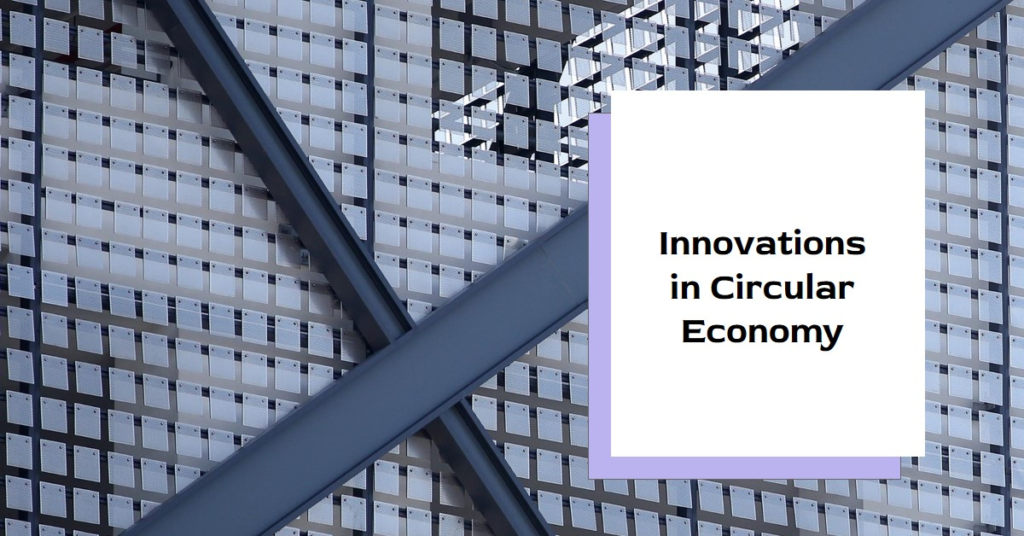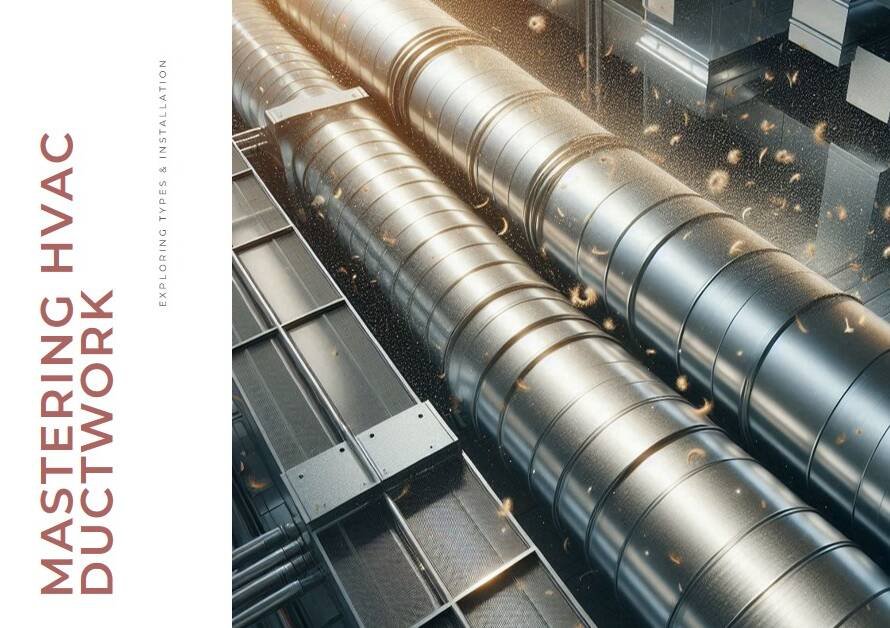
Table of Contents
- Introduction to Circular Economy in Construction
- The Necessity for Circular Economy in the Construction Sector
- Innovative Materials and Technologies
- Design for Deconstruction and Reuse
- The Role of Digital Tools and Platforms
- Policy and Regulation Supporting Circular Economy
- Economic Implications and Business Models
- Future Perspectives and Trends
Introduction to Circular Economy in Construction
The construction industry is undergoing a paradigm shift with the adoption of the circular economy, a model that stands in stark contrast to the traditional linear approach characterized by the sequence of ‘take, make, dispose.’ Traditionally, the linear model has led to significant resource depletion, increased environmental degradation, and a growing waste problem. Material extraction, product manufacturing, and eventual disposal at the end of a building’s life cycle have often overlooked the long-term environmental conséquences.
In the circular economy model, the focus shifts to maximizing the longevity and value of materials through resource efficiency, recycling, and reusing materials. The objective is to minimize waste and environmental impact by keeping resources in use for as long as possible. This approach emphasizes the importance of designing out waste and pollution, keeping products and materials in use, and regenerating natural systems.
By ensuring resources are continually cycled back into production processes, the construction industry can significantly reduce its environmental footprint. For instance, materials like steel, concrete, and glass can be recovered from demolition sites and repurposed for new construction projects. This not only reduces the demand for virgin resources but also decreases energy consumption and greenhouse gas emissions associated with the production of new materials.
The adoption of a circular economy within the construction sector also promotes the use of innovative building techniques and sustainable materials. Prefabricated and modular construction, for example, allows for components to be easily disassembled and reused, thereby extending their lifecycle. Similarly, incorporating green building materials – those that are recyclable or biodegradable – complements the circular approach by ensuring that materials that re-enter the environment do so without causing harm.
Thus, the circular economy offers a sustainable path forward for the construction industry, balancing economic demands with environmental stewardship. By transforming our approach to material usage and waste, the construction sector can play a crucial role in advancing sustainability and combating the challenges of climate change.
The Necessity for Circular Economy in the Construction Sector
The construction industry is a significant contributor to global waste and carbon emissions, necessitating the urgent adoption of circular economy practices. This sector alone is responsible for approximately 39% of worldwide carbon emissions and generates up to one-third of all waste globally. This excessive waste often ends up in landfills, leading to environmental degradation and the depletion of finite natural resources.
In addition to the environmental repercussions, the traditional linear approach to construction is inherently inefficient. It relies on a “take, make, dispose” model, which exhausts natural resources at an alarming rate. Reports indicate that the construction sector is one of the largest consumers of raw materials, utilizing roughly 50% of all extracted resources globally. This unsustainable consumption underscores the urgent need for a paradigm shift toward a circular economy for construction.
Adopting circular economy practices can yield significant socio-economic benefits. For instance, the Ellen MacArthur Foundation estimates that a circular economy model could save the European construction industry approximately €600 billion by 2030. Besides cost savings, this approach can lead to the creation of new business models and job opportunities centered around recycling, refurbishing, and reusing materials. Furthermore, it encourages innovation, spurring the development of new technologies designed to facilitate sustainable construction practices.
Case studies underscore the feasibility and benefits of circular economy principles in construction. For example, the city of Rotterdam has undertaken initiatives to reuse construction materials, significantly reducing waste and conserving resources. Another notable example is the “Madaster” platform in the Netherlands, which tracks the material usage of buildings, ensuring they can be deconstructed and materials reused efficiently.
With the construction industry at a crossroads, adopting circular economy practices is more critical than ever. Addressing waste and inefficiency through recyclable, renewable solutions not only mitigates environmental impact but also provides economic and social advantages, heralding a sustainable future.
Innovative Materials and Technologies
The construction industry stands at a pivotal moment, driven by the imperative to adopt sustainable practices. Innovations in materials and technologies are playing a crucial role in advancing the circular economy for construction. A cornerstone of this movement is the development and use of sustainable materials, such as recycled concrete. This material not only repurposes existing resources but also significantly reduces the carbon footprint associated with traditional concrete production.
In addition, modular construction methods have emerged as a groundbreaking approach to enhance efficiency and sustainability. These designs allow for parts of buildings to be manufactured off-site in controlled environments, subsequently assembled on-site. This technique minimizes material wastage and supports the reuse of components, thereby reinforcing circular economy principles. Companies like Katerra and Project Frog, for instance, have illustrated the potential of modular construction through various projects, demonstrating reductions in both time and material costs.
Smart technologies are also pivotal in driving the circular economy in the construction sector. Advanced tracking systems for material usage and waste management offer real-time insights that help optimize resource allocation. Digital tools and IoT devices can monitor the lifecycle of building materials, ensuring optimal use and facilitating end-of-life recycling processes. Platforms such as BIM (Building Information Modeling) provide a comprehensive view of a project’s material flows, enhancing decision-making to further the goals of a circular economy.
Several forward-thinking companies are leading the charge in these areas. For example, LafargeHolcim has developed a range of green building solutions including ECOPact, a low-carbon concrete, and DYNAMax, a high-performance material with extended durability. Additionally, cities like Amsterdam and Vancouver have launched initiatives to integrate circular economy principles into their urban development plans, showcasing pilot projects that utilize these cutting-edge materials and technologies.
These innovations in materials and technologies are setting a precedent for the future of construction, aligning industry practices with the principles of a circular economy. They signify a transformative shift towards more sustainable, efficient, and economically viable construction methodologies, paving the way for a resilient built environment.
Design for Deconstruction and Reuse
An innovative approach to bolstering the economy for construction lies in designing buildings with future deconstruction and material reuse in mind. At the core of this methodology is the principle that every phase of a building’s life cycle, particularly the design phase, contributes significantly to its recyclability and reusability. Key strategies such as modular design, design for adaptability, and prefabrication are pivotal in making deconstruction more efficient and economically viable.
Modular design emphasizes the creation of buildings with interchangeable components. This technique not only enhances flexibility but also allows for individual modules to be easily disassembled and repurposed. This method significantly reduces waste generation and optimizes material reuse, thereby contributing to a sustainable construction economy. For instance, modular homes can be adapted for various uses over time, reducing the need for new materials and construction processes.
Design for adaptability is another critical strategy. Buildings constructed with adaptability in mind can be readily modified to serve different functions over their lifecycle. Adaptable designs enable easier renovations and extensions, thus minimizing demolition waste and conserving resources. For example, commercial spaces designed to be easily converted into residential units can extend the building’s usefulness while aligning with market demands.
Prefabrication involves constructing building components off-site in a controlled environment, where materials are used more efficiently and waste is minimized. These pre-made components are then transported to the construction site for quick assembly. This method not only speeds up construction but also ensures a higher quality of components, which can be deconstructed and reused with greater ease. Prefabricated buildings, as seen in many urban development projects, exemplify the potential to build sustainably while supporting the circular economy for construction.
Real-world applications of these design approaches demonstrate substantial benefits. For instance, the circular economy initiative in Amsterdam’s Buiksloterham district showcases how modular and prefabricated buildings can thrive, providing flexible housing solutions while minimizing environmental impact. Such projects underscore the importance of integrating deconstruction and reuse principles at the design stage to foster a more sustainable and economically sound construction industry.


The Role of Digital Tools and Platforms
The transition towards a circular economy for construction relies heavily on the integration of advanced digital tools and platforms. Building Information Modeling (BIM) stands out as a pivotal technology. BIM is a process involving the generation and management of digital representations of physical and functional characteristics of places. By providing a comprehensive digital visualization of a project’s lifecycle—from planning and design through construction and operation—BIM enables better resource management and tracking. This tool helps in identifying opportunities for material reuse and recycling, thus minimizing waste and promoting the circular economy.
Material passports are another essential digital innovation. These digital documents provide detailed information about the components and materials used in construction projects. By offering a comprehensive profile of materials, including their origin, composition, and potential for reuse, material passports facilitate better decision-making in material procurement and end-of-life strategies. These passports empower stakeholders to optimize material recovery and ensure that building materials are cycled back into the economy rather than being disposed of as waste.
Furthermore, other digital platforms and tools, such as inventory management systems and resource tracking software, play a significant role in optimizing the lifecycle of building materials. These tools allow for real-time monitoring and management of resources, aiding in the seamless coordination between suppliers and construction sites. With accurate data on material use, availability, and efficiency, stakeholders can plan better, avoid over-ordering, and reduce excess waste, aligning their operations with the principles of the circular economy.
The implementation of digital tools and platforms not only aids in planning but also enhances the monitoring and optimization processes required for sustainable construction. By leveraging these technologies, construction projects can achieve holistic lifecycle management of building materials, contributing significantly to the sustainability goals of the circular economy.
Policy and Regulation Supporting Circular Economy
Government policies and regulations form the backbone of initiatives aimed at fostering a circular economy for construction. The implementation of these frameworks is essential for ensuring sustainable building practices that promote reduction, reuse, and recycling of materials. Current policy landscapes vary across different regions, reflecting diverse approaches to encouraging circular practices.
In many jurisdictions, specific laws mandate the use of sustainable materials in construction projects, often prioritizing recycled or renewable resources. These regulations aim to minimize waste and lower the environmental footprint of building activities. Additionally, financial incentives such as tax credits, grants, and subsidies are offered to developers who integrate circular economy principles. These measures provide economic benefits while promoting environmentally friendly construction practices.
Standards and certifications such as BREEAM (Building Research Establishment Environmental Assessment Method) and LEED (Leadership in Energy and Environmental Design) set benchmarks for sustainable construction. By adhering to these standards, builders can ensure that their projects meet specific criteria for energy efficiency, resource management, and waste reduction. Compliance with these certifications not only enhances a project’s marketability but also ensures adherence to evolving regulatory requirements.
The regulatory frameworks are continually evolving to better support the circular economy for construction. Policymakers are increasingly recognizing the need for comprehensive strategies that address the entire lifecycle of building materials. This includes initiatives focused on the deconstruction and reuse of buildings, which aim to extend the lifespan of resources and reduce demolition waste. Emerging policies also emphasize the importance of digital tools and technologies, such as Building Information Modeling (BIM), which facilitate more efficient planning and utilization of materials.
For builders and developers, staying informed about these regulations is crucial. Compliance not only meets legal obligations but also positions businesses as leaders in sustainability. By embracing the principles of a circular economy for construction, the industry can achieve significant environmental benefits while enhancing economic resilience.
Economic Implications and Business Models
Adopting a circular economy for construction has significant economic implications, presenting both benefits and challenges. One of the most immediate economic advantages is cost savings from reduced material usage. By reusing and recycling materials, construction projects can minimize the need for new raw materials, thereby lowering procurement costs. Additionally, the reduction of waste management expenses and the use of secondary materials can lead to substantial financial savings, making projects more economically viable.
New revenue streams from recycled materials also offer promising opportunities. Recycling construction waste and selling the recycled materials can create an additional income channel. This shift not only supports the environment but also bolsters profit margins. Innovative businesses are increasingly exploring avenues to capitalize on these opportunities. For example, companies that specialize in the deconstruction of buildings, as opposed to demolition, can reclaim valuable materials for resale, creating a lucrative business model.
Innovative business models, such as product-as-a-service (PaaS), are emerging within the construction industry, further enhancing the economic sustainability of circular systems. PaaS allows companies to retain ownership of materials and components, providing them as a service rather than a one-off sale. This approach encourages maintenance, refurbishment, and reuse, fostering long-term relationships with clients while ensuring a steady revenue stream.
Case studies provide practical insights into the financial impact of these models. For instance, Dutch construction company BAM has implemented circular economy principles in several projects. By focusing on material reuse and designing buildings with disassembly in mind, BAM reported reduced construction costs and increased resource efficiency. Another example is the collaboration between French multinational Saint-Gobain and the European Investment Bank, which invested in recycling technologies to innovate their construction operations. This initiative not only optimized resource use but also created a scalable business model yielding noteworthy financial returns.
Overall, the economic implications of a circular economy for construction are multifaceted. While challenges such as initial investment costs and logistical hurdles may arise, the long-term benefits in terms of cost savings, new revenue streams, and innovative business models make the transition compelling for the construction industry. Successful case studies underline the financial viability and enduring value of integrating circular economy principles.
Future Perspectives and Trends
As the construction industry increasingly adopts circular economy principles, several emerging trends and promising future directions are becoming evident. Ongoing research focuses on the development of innovative materials and construction methods that prioritize sustainability and recyclability. Potential breakthroughs in materials science, such as the creation of self-healing concrete and bio-based composites, could revolutionize how buildings are constructed and deconstructed. These advancements not only extend the lifespan of structures but also reduce the demand for raw materials, thereby minimizing environmental impact.
Technological advancements also play a pivotal role in advancing the circular economy for construction. Digital tools such as Building Information Modeling (BIM) and Internet of Things (IoT) sensors enable better resource management and predictive maintenance, ensuring that materials and energy are used more efficiently. Such technologies facilitate the design of modular buildings that can be easily disassembled and reused, promoting a more sustainable lifecycle for construction projects.
Another significant trend is the increasing emphasis on collaboration among various stakeholders. Architects, builders, policymakers, and communities must work together to create a shared vision for a sustainable built environment. Policymakers are particularly crucial in this ecosystem; by implementing regulations and incentives that support circular practices, they can drive widespread adoption across the industry. Equally vital is the role of educational institutions in providing training and resources to equip future professionals with the skills and knowledge needed to champion circular economy principles in construction.
Community engagement is also essential to the success of these initiatives. Public awareness campaigns and participatory design processes can nurture a culture of sustainability, encouraging broader societal buy-in for circular economy practices. By fostering a collective commitment to resource efficiency and waste minimization, we can move towards a future where the construction industry not only meets the demands of a growing population but does so in a way that safeguards our planet for future generations.


